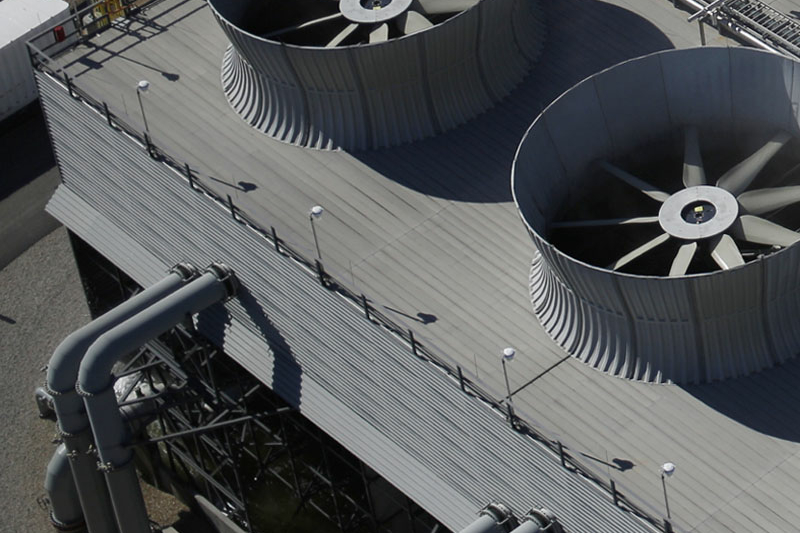US tax credit encourages investment in carbon capture and storage
Our overview of the Section 45Q tax credit helps investors understand how they may receive incentives to capture, store and use carbon dioxide and carbon oxide

This report looks at where we are in the journey toward implementing carbon capture and storage (CCS) technologies, with a focus on how laws and regulations in the US and Australia affect CCS adoption. We see two main ways that authorities will shape the CCS landscape, often acting as catalysts to speed implementation.
Our objective is to help companies understand the CCS landscape so they can pursue the best possible course to meet climate change mitigation goals and finance and properly structure CCS projects. To that end, this report has a section on US incentives for CCS, which zooms in on the 45Q tax credit, and a section on federal environmental and other protections in the US. The report has a section on Australian regulations affecting CCS, which covers CCS-specific rules and relevant environmental and other protections in the country. And it includes a brief section on the outlook for CCS M&A, which we believe will accelerate in coming years.
Our overview of the Section 45Q tax credit helps investors understand how they may receive incentives to capture, store and use carbon dioxide and carbon oxide

Although there are no CCS-specific federal environmental laws or regulations, the federal government has significant influence on how CCS is implemented in the US

Despite short-term headwinds, long-term trends are likely to drive increased investment in carbon capture and storage

by Tim Power
CCS projects are regulated by the Commonwealth, states and territories under CCS legislation and more general environmental laws and requirements


Our overview of the Section 45Q tax credit helps investors understand how they may receive incentives to capture, store and use carbon dioxide and carbon oxide
World in Transition Our views on changing dynamics in energy, ESG, finance, globalization and US policy.
The US federal government provides tax credits to taxpayers that capture and store, or use carbon dioxide and carbon oxide in accordance with rules laid out in Section 45Q of the Internal Revenue Code of 1986, as amended, and the Treasury Regulations thereunder. The purpose is to incentivize investment in carbon capture and storage (CCS) projects.
The 45Q tax credit has been expanded a number of times since it was initially established in 2008, most recently at the end of December 2020 (for details, see the sidebar "Evolution of the Section 45Q tax credit"). Investors have responded positively to the current rules, which could help unlock significant investment in CCS in the future.
The Bipartisan Budget Act of 2018 instituted a number of important changes to Section 45Q that made these credits more attractive to investors. It expanded Section 45Q to cover both carbon dioxide and carbon oxide. It eliminated limits on the overall credits available in the market—and for some types of taxpayers, it lowered thresholds for the amount of carbon that would have to be captured in a given year.
It clarified how long credits would be available—12 years, beginning when the carbon capture equipment is placed in service—providing more certainty for investors. And importantly, it increased the value of Section 45Q credits.
In 2020 and early 2021, the US Treasury Department and the Internal Revenue Service published guidance that addressed many remaining open questions about how the credit works, providing additional confidence to investors. Regarding project development, the guidance is broadly similar to guidance previously provided for wind and solar projects.
Further, on December 27, 2020, President Trump signed into law the Taxpayer Certainty and Disaster Tax Relief Act of 2020, also known as the "Extenders Bill," which extends the Section 45Q tax credit to projects that begin construction prior to January 1, 2026 (extending by two years the original date of January 1, 2024).
In the remainder of this article, we provide a detailed overview of the current state of the Section 45Q tax credit to help taxpayers understand how they may be able to take advantage of it.
In an effort to incentivize additional investments in carbon capture and sequestration projects, in 2008, Congress added Section 45Q to the Internal Revenue Code. In its original form, Section 45Q provided a tax credit for each metric ton of qualified carbon dioxide captured and either disposed of in secure geological storage or used for certain purposes, such as a tertiary injectant in connection with certain oil or natural gas extraction processes. Such credits, however, were made available only for the first 75 million tons of qualified carbon dioxide captured by all projects. As each taxpayer claiming Section 45Q credits was required to capture at least 500,000 metric tons of qualified carbon dioxide in a single taxable year, the program limitation was expected to be quickly reached.
The relatively low value of the initial Section 45Q credit and the 75 million-ton program limitation stalled interest for developing projects to claim the credit. Specifically, the uncertainly with respect to the amount of Section 45Q credits remaining available at any given time for a specific project (out of the limited overall pool of 75 million tons of carbon dioxide from which the credits could be derived) significantly discounted the value taxpayers ascribed to such tax credits.
In a letter issued earlier in 2020 by the Treasury Inspector General for Tax Administration in response to inquiries made by members of the US Senate Finance Committee, the Inspector General confirmed that in the years 2010 to 2019, ten taxpayers claimed 99.9 percent of all Section 45Q credits. Realizing the poor reception to the Section 45Q credit, Congress amended Section 45Q pursuant to the Bipartisan Budget Act of 2018.
As amended, the current Section 45Q extends a credit to taxpayers who use carbon capture equipment to capture and sequester qualified carbon oxide at a qualified facility (together, such equipment and facility, a "project"). Notably, Section 45Q credits are now available for the capture of carbon oxide, not only carbon dioxide.
In addition, the amendment eliminated the 75 million-ton program limitation for claiming Section 45Q credits and generally reduced the project minimum requirements. Now, a taxpayer owning a project that captures and sequesters, for example, at least 100,000 (in the case of a direct air-capture facility) or 500,000 (in the case of an electricity generating facility) metric tons of qualified carbon oxide in a taxable year generally will be entitled to receive Section 45Q credits for the 12-year period beginning when the carbon capture equipment is placed in service.
Further, the Act increased the value of the Section 45Q credit. The dollar amount of the tax credit each project could claim is based on the amount of carbon oxide captured and whether it is then stored in a secure geological storage space or used for certain other permitted purposes. For taxpayers who dispose of qualified carbon oxide in secure geological storage spaces, a Section 45Q credit worth US$22.66 per metric ton was available for 2017 and increases linearly until it reaches a value of US$50 per metric ton in 2026. A Section 45Q credit worth US$12.83 per metric ton was available for 2017 and increases linearly until it reaches US$35 per metric ton in 2026 for taxpayers who capture and then use qualified carbon oxide either (i) as a tertiary injectant in connection with a qualified enhanced oil or natural gas recovery project and then dispose of such carbon oxide in secure geological storage spaces or (ii) in certain fixation projects using photosynthesis or chemosynthesis, in certain projects involving chemical conversion and subsequent storage, or for certain other approved purposes for which a commercial market exists. After 2026, the amount of the credit is subject to an inflation-adjusted increase.
While the Act was a welcomed development and it renewed interest in developing projects to claim Section 45Q credits, activity in the sector remained lackluster given numerous uncertainties, including the manner in which projects could be developed and financed and when previously earned credits might be required to be forfeited.
In 2020, the US Treasury Department and the Internal Revenue Service (IRS) released long-awaited guidance answering most of the open questions. Such guidance includes proposed regulations (on which taxpayers may currently rely), Notice 2020-12, and Revenue Procedure 2020-12. The proposed regulations were followed by final regulations in early 2021 ("final regulations").
In general, this guidance is taxpayer-favorable and, in the case of project development and finance, is broadly similar to guidance previously provided for wind and solar projects. As such, this guidance provides developers, investors and lenders the necessary clarity and certainty to allow them to develop and invest in new carbon capture sequestration projects.
To be eligible for the Section 45Q credit, a project must be a "qualified facility." A qualified facility must either store or use the carbon oxide it captures in accordance with the rules under Section 45Q.
A qualified facility is a facility that meets certain minimum emission thresholds and the construction of which began before January 1, 2026, with either (i) the construction of carbon capture equipment used at the facility also beginning before such date, or (ii) the original planning and design for the facility having included the installation of carbon capture equipment (the "beginning of construction requirement"). Notably, the deadline was extended by two years from the prior "before January 1, 2024" deadline, pursuant to the 2020 Extenders Bill.
The final regulations simplified the definition of "carbon capture equipment," and provided greater flexibility, by removing the components list included in the proposed regulations and including a broader definition. As such, carbon capture equipment includes all components necessary to compress, treat, process or perform other physical action to capture carbon oxide. This definition further includes gathering and distribution lines that collect carbon oxide captured from one or more qualified facilities constituting a single project. Carbon capture equipment excludes, however, equipment used for transporting qualified carbon oxide for disposal, injection or utilization.
Notice 2020-12 provides that taxpayers may satisfy the beginning of construction requirements by meeting either the "physical work" test or the 5 percent safe harbor. This disjunctive test for satisfying the beginning of construction requirements is consistent with the IRS guidance applicable to wind and solar projects ("wind and solar guidance").
Under the physical work test, a project is treated as beginning construction once a taxpayer has begun work of a significant nature on the project. Whether physical work of a significant nature has occurred is a facts-and-circumstances inquiry, turning on the nature of the work performed rather than the amount or cost of the work. Physical work may be performed by the taxpayer or by a third party under a binding written contract, and may be performed onsite or offsite. Examples of physical work of a significant nature include the excavation for and installation of foundations, the manufacture of components necessary for carbon capture processes and the installation of equipment necessary for the disposal of qualified carbon oxide in secure geological storage spaces.
Notably, physical work of a significant nature does not include preliminary activities, such as securing financing, clearing a carbon capture project site, or obtaining permits and licenses. Further, as under the wind and solar guidance, work to produce components that are either in existing inventory or are normally held in inventory also does not qualify.
Under the 5 percent safe harbor, construction begins once a taxpayer pays or incurs at least 5 percent of the total cost of the carbon capture project. Relevant costs include all costs included in the depreciable basis of the project, as well as certain front-end planning, design and engineering costs.
Once construction has begun, taxpayers must further satisfy an additional "continuity" requirement by making continuous efforts to complete the carbon capture project (in the case of the 5 percent safe harbor) or by maintaining a continuous program of construction until the completion of the project (in the case of the physical work test).
Notice 2020-12 deems this continuity requirement to be satisfied if the project is placed in service by the end of a calendar year that is no more than six calendar years after the calendar year during which construction began (the "continuity safe harbor"). This six-year safe harbor period is more favorable than the four-year period contained in the wind and solar guidance, and reflects the longer time horizon for carbon capture projects as compared to wind and solar projects.
Projects that fail to meet the continuity safe harbor will be tested under a facts-and-circumstances analysis, the result of which may be difficult to predict with a high degree of confidence.
In addition to Section 45Q credits, several states also offer tax incentives for carbon capture sequestration projects. Various states have set certain goals for greenhouse gas emission reduction. Some states, including (among others) California, Hawaii, New York and Washington have passed legislation adopting 100 percent clean or renewable energy mandates or goals.
The types of state tax incentives generally vary with respect to the type of relevant taxes and the scale of the incentives, mainly in terms of the respective tax reduction and the time and periods such incentives apply to the specific project.
Texas, for example, has the widest variety of incentives for carbon sequestration projects, especially for projects involving enhanced oil recovery (EOR). Such incentives include sales tax exemptions, franchise tax credits and severance tax reductions. California also provides state tax credits subject to a certain cap per ton, under its "Low Carbon Fuel Standard."
In analyzing the economics and the ability to finance carbon capture sequestration projects, developers and investors should explore and take into account the state and local tax incentives in the relevant jurisdiction, in addition to Section 45Q credits.
To qualify for the Section 45Q credit, a qualified facility must either properly dispose of the carbon oxide in secure geological storage spaces or use it for certain approved purposes, such as a tertiary injectant in connection with certain oil or natural gas extraction processes.
Secure geological storage includes storage in deep saline formations, oil & gas reservoirs and unminable coal seams. To securely dispose of the carbon oxide, the facility needs to meet certain requirements. The final regulations provide that, for carbon oxide used as a tertiary injectant in EOR, the existence of a "secure geological storage" requires compliance and reporting either under Subpart RR of the Federal Environmental Protection Agency's Greenhouse Gas Reporting Program or under the International Organization for Standardization (ISO) standard for quantifying safe long-term storage of carbon dioxide in association with EOR.
If a qualified facility uses, rather than simply stores, carbon oxide, it must do so in one of several approved ways, which are intended to enhance specific processes and technology developments. These include (i) chemical conversion into a compound in which such carbon oxide is securely stored, (ii) fixation through photosynthesis or chemosynthesis (such as growing bacteria), or (iii) use for other purposes for which a commercial market exists. The final regulations define the term "commercial market" broadly as a market in which a product, process, or service that utilizes carbon oxide is sold or transacted on commercial terms. Notably, the definition is not limited to any particular type of product or market, inviting interesting possibilities, including serving a distinct pre-existing need and thereby incentivizing a significant uptick in carbon capture by existing industries, such as companies engaged in the use of carbon oxide for meat preservation or creating soft drinks.
In general, the taxpayer who owns equipment placed in service on or after February 9, 2018 and physically or contractually ensures the capture and disposal, injection or utilization of such carbon oxide is entitled to the tax credits with respect thereto. The final regulations clarify that the taxpayer who owns the carbon capture facility does not need to own the facility that emits the carbon oxide that is being captured to be eligible for the credits.
Therefore, a taxpayer may, but need not, personally dispose of, inject or utilize carbon oxide; thus, it may hire a contractor to sequester carbon oxide generated by the taxpayer's facility. The final regulations provide that a taxpayer "contractually ensures" the sequestration of carbon oxide when it enters into a binding written contract requiring the counterparty to sequester carbon oxide in accordance with the requirements of Section 45Q and the regulations thereunder. A binding written contract must be enforceable under state law and generally must not limit the amount of damages to less than 5 percent of the contract price. Further, the contract must include commercially reasonable terms, contain enforcement mechanisms, require the counterparty to comply with relevant tax law and regulatory requirements, and provide information relating to recapture events (in the case of qualified carbon oxide that is intended to be disposed of in secure geological storage spaces and not used as a tertiary injectant). Each party to the contract generally is required to report such contract (and certain other information) to the IRS on an annual basis.
In lieu of claiming a Section 45Q credit, the owner of the carbon capture equipment may elect to allow the person who contractually ensures the sequestration of the carbon oxide to claim all or a portion of the credit associated with the amount of carbon oxide disposed of, injected or utilized by such person. The Section 45Q credit, however, may not be transferred to a subcontractor of the person contracted to perform the sequestration of captured carbon oxide. The taxpayer may enter into multiple contracts with multiple counterparties in a single year. If there are multiple counterparties, the maximum amount of Section 45Q credits allowable to each counterparty is proportional to the amount of captured carbon oxide sequestered by such person.
As such, the taxpayer who owns a project that captured carbon oxide may, for example, enter into a contract with one party to use a portion of captured carbon oxide as a tertiary injectant and with another party to properly dispose of a portion of captured carbon oxide, while electing to pass a portion of the Section 45Q credits to each such party.
Together with the fact that elections are made on an annual basis, this pass-through credit mechanism provides significant flexibility for taxpayers to use or monetize a project's tax credits.
Section 45Q provides lower-value credits for projects placed in service prior to February 9, 2018, the date of the enactment of the Bipartisan Budget Act of 2018, than for projects placed in service on or after such date. In general, if a project placed in service before such date is modified on or after such date, and such physical modification or addition results in an increase in the carbon oxide capture capacity of existing carbon capture equipment, the final regulations require a bifurcation approach for determining the amount of any Section 45Q credits. In particular, higher-value credits may be available with respect to carbon capture capacity arising from such modification, and lower-value credits generally will be available with respect to carbon capture capacity not arising from such modification.
The final regulations adopt a rule similar to the so-called "80/20" rule from Revenue Ruling 94-31, with respect to facilities that contain some used property. This rule has been used in recent years in the context of repowering operating wind farms, allowing such projects to restart the applicable production tax credit period. Similarly, if a modified or rebuilt carbon capture facility results in the existing or used components comprising 20 percent or less of the total fair market value of the project, then the entire project generally will be treated as being originally placed in service at the time such retrofitting is completed. In such a case, if the retrofitting occurs on or after February 9, 2018, no bifurcation of the Section 45Q credits is required and the higher-value credits generally will be available with respect to the entire project.
Section 45Q credits are subject to recapture if previously stored or utilized carbon oxide leaks into the atmosphere during the recapture period. The recapture period is the period that begins on the date of the first injection of qualified carbon oxide and ends at the earlier of three years after the taxable year for which the applicable Section 45Q credit was claimed or the date the relevant monitoring requirements end under Subpart RR of the Federal Environmental Protection Agency's Greenhouse Gas Reporting Program regulations or the ISO standard, as applicable.
In general, leaked carbon oxide first reduces the Section 45Q credits available in the taxable year in which the leak is identified and reported. If the amount of the leaked carbon oxide exceeds the carbon oxide captured in such taxable year, the excess leaked carbon oxide generally will result in the recapture of Section 45Q credits in preceding taxable years. The recapture of Section 45Q credits generally is determined on a last-in-first-out (LIFO) basis and, as discussed above, generally is limited to the three taxable years preceding the taxable year of the leak. For example, if 500 metric tons of carbon oxide are captured in each of years one through three, but 1,000 metric tons of carbon oxide leak in year three, no Section 45Q credits are available in year three and the Section 45Q credits obtained in year two are then subject to recapture.
In general, the recapture of Section 45Q credits results in an increase to the taxpayer's income tax liability in the taxable year in which the leak is identified and reported. The taxpayer is not required to amend its prior-year income tax returns to take into account recaptured Section 45Q credits. Thus, in the example above, all adjustments would occur on the taxpayer's income tax return for year three.
Although the final regulations do not include a recapture safe harbor, they do provide limited exceptions to recapture in certain events. These exceptions include leaks arising from actions not related to the selection, operation or maintenance of the storage facility, such as, volcanic activity or a terrorist attack. To further mitigate any recapture concerns, taxpayers may consider obtaining recapture insurance.
There are various ways through which taxpayers may monetize Section 45Q credits. As discussed above, a portion or all of the credits could be transferred to those who contractually ensure the sequestration of the carbon oxide, including the relevant offtaker.
Following the issuance of the new guidance, prospective developers may also now consider tax equity structures to finance their projects, similar to the structures used regularly to finance wind and solar projects, with the most common being the "flip partnership."
A flip partnership could either own the relevant project or otherwise could be assigned the Section 45Q credit in connection with its contractual obligation to dispose of or utilize the relevant carbon oxide.
In general, a flip partnership is a partnership, for tax purposes, between a developer and one or more tax equity investors (a "project company"). The most common tax equity investors in today’s market are financial institutions, strategic investors and certain companies with significant taxable income.
In this structure, until such time as the tax equity investors achieve an agreed after-tax internal rate of return (the "flip rate"), 99 percent of all partnership taxable items, including tax credits and losses, generally are allocated to them, along with a lower percentage of cash distributions. Once the flip rate is reached, the allocations and distributions "flip," and going forward, the developer generally is allocated 95 percent of the partnership taxable items and is entitled to distributions of an equal amount of cash, while the remaining 5 percent is allocated or distributed to investors.
Revenue Procedure 2020-12 provides a safe harbor (the "carbon capture safe harbor") pursuant to which the IRS will treat an investor in a project company that is structured as a flip partnership as a partner for US federal income tax purposes. Where such carbon capture safe harbor is met, allocations of partnership items to such investor, including allocations of the Section 45Q credits, generally will be respected.
For the carbon capture safe harbor to apply, taxpayers must satisfy all applicable requirements set forth in Revenue Procedure 2020-12. This revenue procedure conceptually tracks the structure and requirements provided in Revenue Procedure 2007-65, which sets out the analogous "allocation safe harbor" for wind projects, including by explicitly blessing the flip partnership structure. Some of these requirements include the following:
First, an investment in the project company must constitute a "bona fide equity investment" with a reasonably anticipated value commensurate with the investor's overall percentage interest in the project company. This generally requires that the value of the interest be subject to both upside and downside risk and not resemble a preferred return representing a payment for capital.
Second, when the investor acquires its interest in the project company, it must make an unconditional investment, equal to at least 20 percent of the total capital investments plus reasonably anticipated contingent investments. The investor must maintain this investment for as long as it maintains its interest in the project company, with the exception that such investment amount may be reduced by distributions paid out of the proceeds of the project company's operations.
Third, unlike for wind projects, the carbon capture safe harbor permits the tax equity investor to have a put option to sell its partnership interest in the project company to the developer, or to any other person involved in the project, as long as the exercise price does not exceed its fair market value as determined at the time the option is exercised. The carbon capture safe harbor, however, does not allow the developer, the investors or any related person to have a call option to purchase the equipment, the project or the partnership interest of another party.
Fourth, an investor may not receive guarantees from parties associated with the carbon capture project with respect to its ability to claim the Section 45Q credits or the cash equivalent thereof. The carbon capture safe harbor does not, however, prohibit investors from obtaining similar guarantees or insurance from third parties, including recapture insurance.
The carbon capture safe harbor specifically permits the investor and the project company to obtain guarantees concerning the performance of acts necessary to obtain the Section 45Q credits and the non-performance of acts that would cause the project company to fail to qualify for, or lose via recapture, such Section 45Q credits. Permitted guarantees include guarantees relating to proper storage of qualified carbon oxide, as well as completion guarantees, operating deficit guarantees, environmental guarantees and financial covenants.
Likewise, the carbon capture safe harbor permits agreements entered into on arm's-length terms between the project company and an emitter or offtaker, concerning the long-term purchase of carbon oxide, leases of carbon capture equipment by the project company and certain services to be provided by the project company.
Section 45Q marks an important development in clean energy incentives in the US and an opportunity for taxpayers, particularly in the growing tax-equity market. Market participants have carefully watched congressional and regulatory development of Section 45Q for more than a decade.
First stalled by the then-relatively low credit amount and output limitations, the amendments under the Bipartisan Budget Act of 2018 renewed interest in developing projects to claim Section 45Q credits. So too did the taxpayerfriendly regulations, Notice 2020-12 and Revenue Procedure 2020-12. Investors and developers were generally pleased by the notice and revenue procedure containing guidance broadly similar to existing authorities for wind and solar projects with which they are already familiar and comfortable. As of 2020, there were 14 commercial CCS facilities in operation in the US and 19 in construction or development, according to the Global CCS Institute. Legislation in late 2020 extending the beginning of construction requirement deadline from prior to January 1, 2024 to prior to January 1, 2026 was also welcomed by taxpayers, given delays in providing guidance for Section 45Q projects and the overall impact of the COVID-19 pandemic.
The guidance, final regulations and deadline extensions, together with the new presidential administration and Congress focusing on proliferating clean energy technology and projects, should contribute to this industry and likely provide a boon for the market in the coming year.
White & Case means the international legal practice comprising White & Case LLP, a New York State registered limited liability partnership, White & Case LLP, a limited liability partnership incorporated under English law and all other affiliated partnerships, companies and entities.
This article is prepared for the general information of interested persons. It is not, and does not attempt to be, comprehensive in nature. Due to the general nature of its content, it should not be regarded as legal advice.
© 2021 White & Case LLP